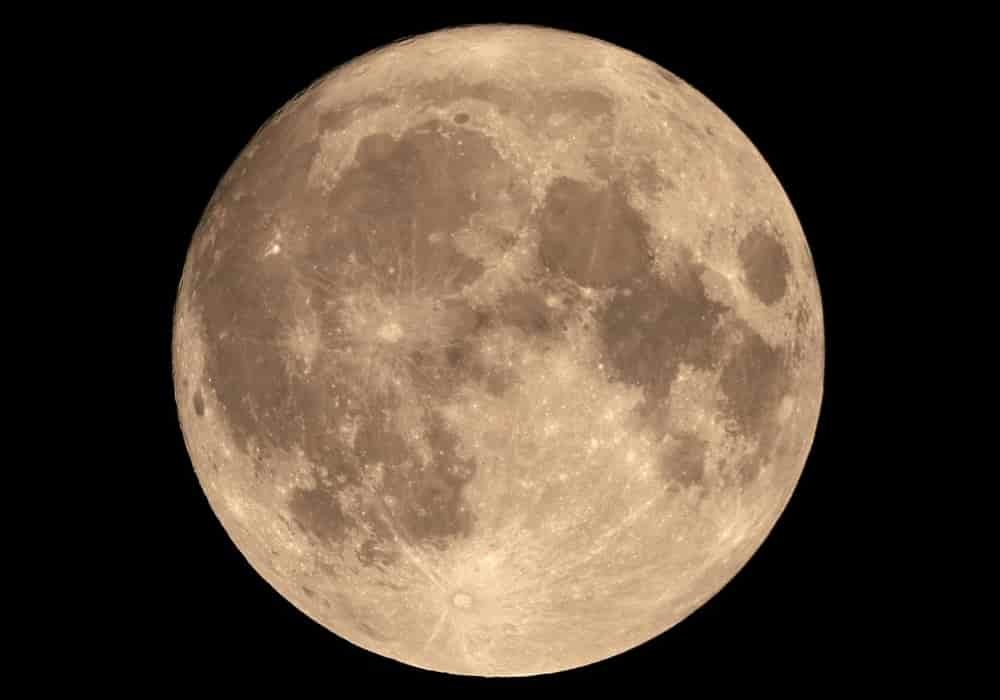Wolf Moon
As with almost all full moon nicknames, the Wolf Moon nickname is believed to have originated in Native American culture, supposedly inspired by hungry wolves that howled outside of villages long ago, according to the Old Farmer’s Almanac.
In fact, there are a few other names for the January full moon, including the “bear hunting moon” and even “the sun has no strength to thaw.” The nicknames are, of course, descriptive of the climate as well as the various activities that may have taken place at the time.
As for when to look at the heavens for your chance to see the wolf moon in all its glory, EarthSky explains:
For us in the northern hemisphere – where the sun continues its low arc across the sky by day (although getting higher and higher by the day) – the full moon in January rises high in the sky. It mimics the path of a summer sun. If you’re in this hemisphere, watch for the full moon in January, especially around midnight (midway between local sunset and sunrise). It will be like a midday summer sun. North of the Arctic Circle, this full moon remains off 24 hours a day, like the midnight sun of summer.
So if you have nothing else to do tonight it might be worth it to stay awake and see the first full moon of 2021. It will surely be a beautiful sight and, as long as the weather is right. , you will certainly be glad you did. If you hear screaming, go back inside.
A penumbral eclipse
This eclipse called “Wolf Moon” will be the first of the four planned for 2020. The phenomenon should last a total of 4 hours, and the populations of Europe, Africa, Asia, Alaska, and Australia will be able to hope to attend this rare spectacle.
The peculiarity of this lunar eclipse is that it is a penumbral eclipse. The latter occurs when the Moon crosses the penumbra of the Earth. It blocks sunlight and causes the shadow of the Earth to appear on the surface of the Moon. Unlike other lunar eclipses, penumbral eclipses are very difficult events to observe.
Where can I see Wolf Moon?
The full moon of January 2021, called the Wolf Moon, will occur on Thursday, Jan. 28, at 2:16 p.m. EST (1916 GMT) according to NASA. The moon will be in the constellation Cancer, and rises just a few minutes before sunset.
Full moons happen when the moon is exactly on the opposite side of the Earth from the sun, so the entire Earth-facing side is illuminated. As it happens the rotation period of the moon is the same as its orbital period, so we always see the same side of our satellite. (This gives rise to another misnomer, the “dark side” of the moon. Both sides of the moon get the same amount of light, the far side of the moon is just one we don’t happen to see from Earth).
When can I see Wolf Moon?
The timing of the full moon is the same everywhere — though the hour depends on your time zone. That’s because it is determined by the moon’s position relative to the Earth rather than its apparent position in the sky, which differs slightly depending on your location. So while the moon is officially full at 2:16 p.m. in New York, that will be 6:16 a.m. on Jan. 29 in Melbourne. To catch the actual moment of the full moon while it is above the horizon, one needs to be east of New York City — in London, for example, the moon is full at 7:16 p.m., after the sun sets at 4:43 p.m. Similarly in Paris, the full moon will be later, at 8:16 p.m.

